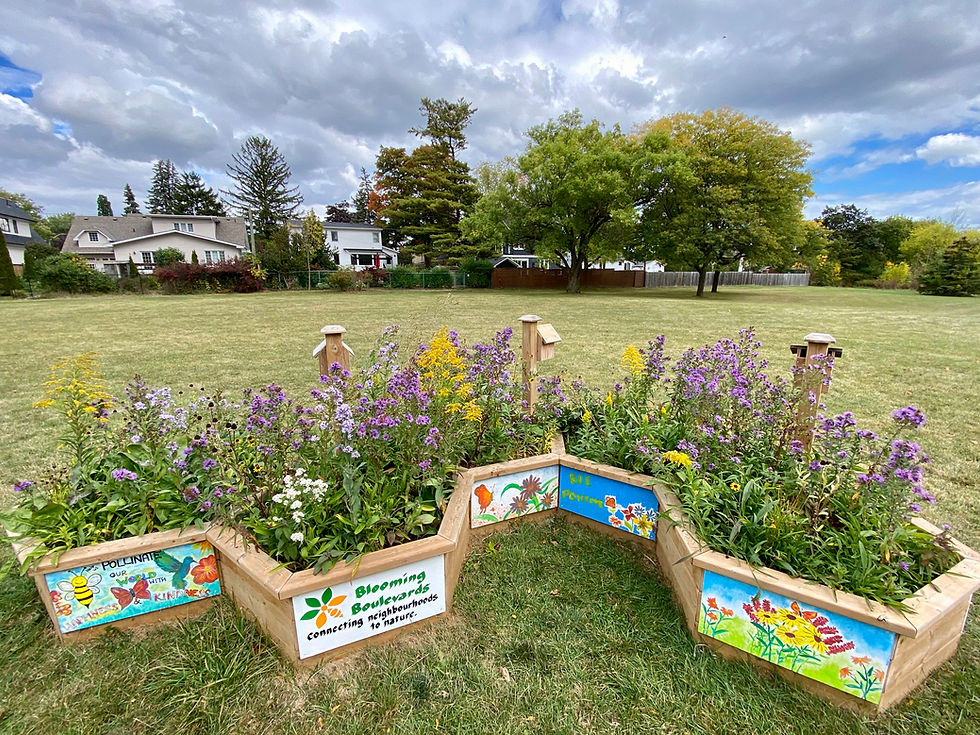Seed Starters!
- Jeanne McRight

- Mar 16, 2022
- 3 min read
A how-to primer on sowing your native seeds indoors
by Jeanne McRight
Early March is when we sow our native plant seeds for indoor and outdoor propagation - thousands of them! It takes teamwork to get this many seeds started in germination trays and containers. This year we have 28 propagation volunteers who are sowing 4000+ seedlings, and Jeanne sowing the remaining 4000+, for a total of 8,000 potential native plant babies ready by the end of May. Whee-hoo!
Why are we growing all these seeds? Because we donate them to Mississauga residents - our garden stewards - who are building a network of native wildflower gardens across the city.
Why are we growing all these seeds? Because we donate them to Mississauga residents - our garden stewards - who are building a network of native wildflower gardens across the city. More habitat means more native bees, butterflies, and birds - and a healthier, more biodiverse ecosystem is the long-term goal of this good work!
Note:
Seeds need stratification to break dormancy. Check out the stratification info in the Resources section at the end of this article.
First, make a space and set up indoor grow lights
Here's a tour of some of the seedlings and their indoor lighting setup in Jeanne's studio:
Before seed sowing, prepare the germination trays
Before we start sowing seeds, germination trays with moistened soilless mix must be prepared. Filling the trays with a soilless mix rather than compost or garden soil means fungal diseases can be avoided, but care must be taken not to compact the soil before sowing. We prefer to use cell inserts to start or seedlings, so we can move them around during the growing process. Other gardeners like to sow directly into the trays. Either way, when seedlings are large enough they will need to be transplanted into larger, deeper containers.
Here, BB volunteer Mohan Iyer, giving advice as a Mississauga Master Gardener, demos the proper way to fill a tray:
Seed sowing can be tricky
Native seeds from most of our local southern Ontario species must be stratified for a period of several months before they are able to germinate well. The stratification treatment varies according to species.
Early March is when we sow our native plant seeds for indoor and outdoor propagation - thousands of them! It takes teamwork to get this many seeds started in germination trays and containers. This year we have 28 propagation volunteers who are growing 4000+ seedlings their own homes, and Jeanne is growing the remaining 4000+, for a total of 8,000 potential native plant babies. Whee-hoo!
BB volunteer Catherine Fleming, also advising as a Mississauga Master Gardener, shows an effective technique for scattering small seeds evenly without over-sowing:
Watering joys and and sorrows
By mid-March to the end of the month is a critical time for the emerging plants. Attention to watering is critical, and just the right amount is needed to avoid problems.
Here's a video from Jeanne to show you how to assess the need for water in a germination tray. She also shows when and how to add the right amount water to the bottom tray so the soil does not get soggy.
I hope you'll find that by keeping these tips in mind, and by carefully observing their response, you can keep your seedlings thriving during their critical early period when they are so vulnerable.
Resources
NANPS 2020-2021 Seed stratification codes:









Comments